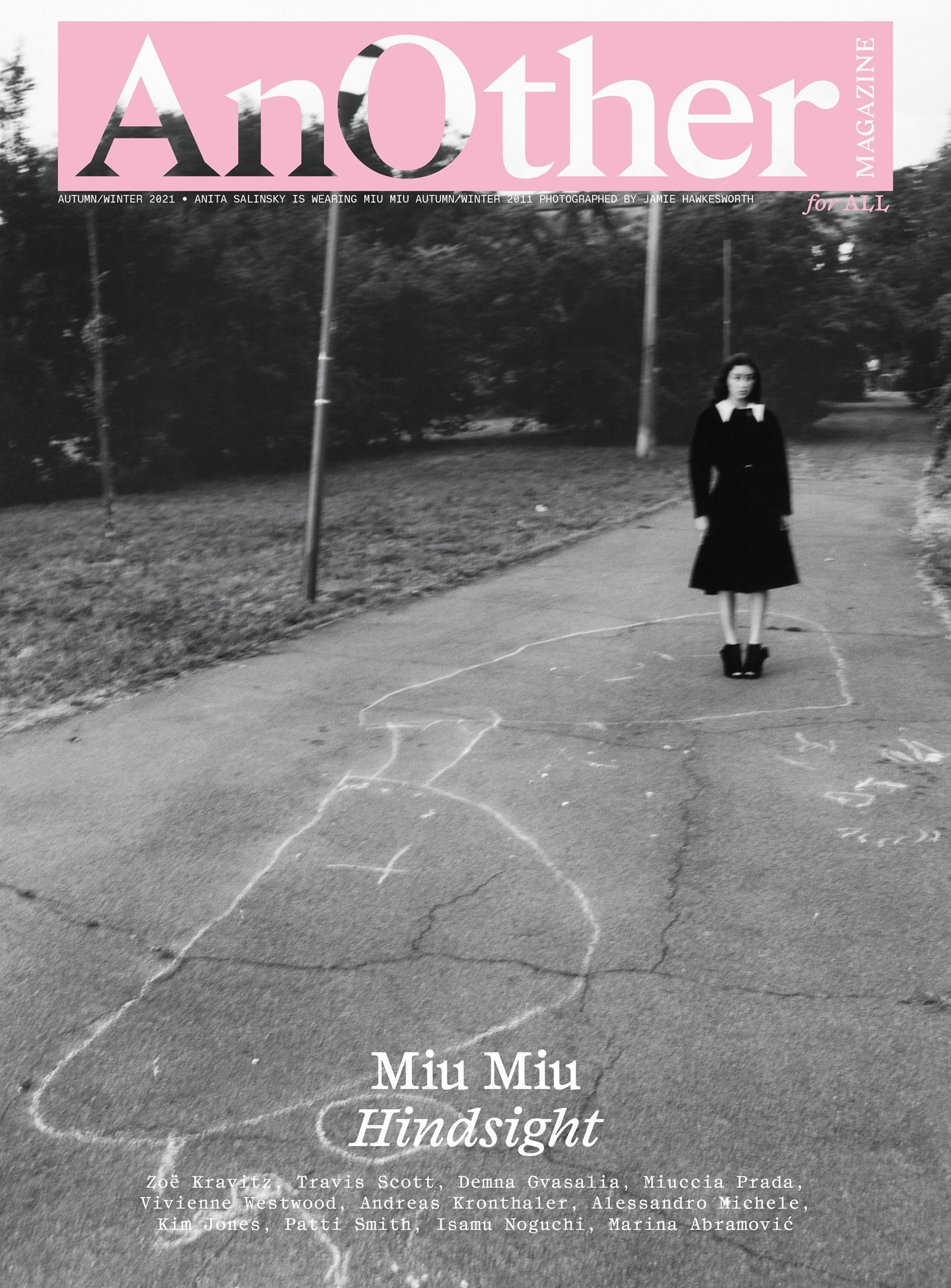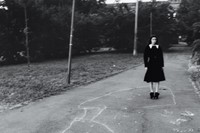This article is taken from the Autumn/Winter 2021 issue of AnOther Magazine.
If Prada is the elder statesman in the empire Miuccia Prada presides over with her husband, Patrizio Bertelli, Miu Miu is its intuitive, impulsive counterpart. Titled after the affectionate moniker by which the designer has been known by her closest friends and family since she was a child, Miu Miu has the sensibility of sibling rebellion. Each bears an echo of the other: Miu Miu’s intellect is light-hearted compared to Prada’s heavyweight approach; Prada questions luxury, whereas Miu Miu toys with its trappings. While also profoundly radical, Prada is more serious, the public face of Miuccia Prada and indeed the family dynasty – carrying the name of her mother, Luisa, who ran the company once her own father, Prada’s founder Mario Prada, stepped down. Miu Miu, which launched in 1993, is conversely just Miuccia Prada’s. It is a place where she can express herself freely. Prada is now co-creatively directed by Miuccia Prada and Raf Simons. Miu Miu is personal.
“The show in the mountains was personal – exactly that,” Miuccia Prada says. Entitled Brave Hearts, it was filmed in March 2021, with Europe in the throes of the third wave of the pandemic. With references to both Tyrolean and Highland dress, Miu Miu’s Autumn/Winter collection also draws on the dress codes adopted by its designer as a young woman. Those were unconventional. “I had so much fun in the mountains, skiing in a skirt,” she remembers. “I skied in a bikini too. I did it back then. It was perfectly normal. And the mountains are my favourite place in the world. I am in love with the mountains. I enjoy them at any moment, under every circumstance. I don’t know why.”
Prada’s clothing designs have always been drawn from her personal experience, personal history, personal tastes. She dressed in Saint Laurent as a rebellious, left-leaning student in the 1970s; later in the 1980s, butting against the direction of contemporary fashion, she bought her clothes from children’s tailors and from suppliers of uniforms for nurses and chambermaids, before deciding to design her own. Miu Miu is of course no exception: it began life as a small collection of minimal, vintage-inspired pieces, the sort of thing she might dream of wearing. If the sobriety of Prada reflected the life of a committed feminist and businesswoman – albeit a creative one, with impeccably refined taste – Miu Miu spoke of the side of Miuccia Prada that grew up wanting to wear pink when her mother dressed her in navy, that secretly hitched up her skirt as she left her house to go out, and that skied in a bikini.
Miuccia Prada likes bravery – she is herself brave. And it is a quality she admires in others. “Bravery is something women always need,” she commented at the time the collection was shown. “This talks about the fantasies of women, their imaginations and dreams of different places, different ideas. Following your dreams is courageous – that takes bravery and strength.” Still, for Miuccia Prada, while women’s fantasies are often the starting point of a conversation, fashion is always seen in the context of it being in the first instance a service to men (at Prada) but to women at both Prada and at Miu Miu still more so.
And so, at the Italian ski resort of Cortina d’Ampezzo, against a backdrop of the Dolomite Alps, models walked through the snow in boots – from ankle to thigh-high – and chubby coats in teddy bear fur, bombers, jumpsuits and miniskirts in Miu Miu’s signature matelassé leather and boudoir satins in a sugary colour palette that seemed as sweet as it was incongruous, as apparently delicate as the look is ultimately fierce. Juxtaposing clothing designed to protect its wearer from the elements with more quintessentially feminine pieces – those aforementioned fantasies, evocative of an empowered sense of seduction – oversized satin padded jackets were layered over lingerie-inspired slip dresses in featherlight silks or lacy sweaters and skirts embroidered with twinkling sequins. Striped, pop bright and pastel crochet nursery knits framed faces and made for cosy cardigans, arm warmers, socks and tights. And yes, there was indeed a bikini of sorts: a bralet and skirt – the dimensions of the latter, an over-anxious mother might not unreasonably argue, are more reminiscent of a belt. One can only imagine what Miuccia Prada’s own parents had to say on the matter of their daughter skiing in her swimwear all those years ago now. Not that she would have let that stop her.
Idiosyncratically, sport has always been a passion for Miuccia Prada, long before the fashion world caught up. She was among the first designers to put sportswear on the runway: for Prada’s final Spring/Summer show of the millennium she introduced Prada Sport, inspired by Bertelli’s love of sailing and Prada’s announcement of its involvement in the America’s Cup in 1997. The red and white logo mirrored that of the lettering on the Prada Challenge boat, and the label, reintroduced in 2018, is now called Linea Rossa. Designer sportswear proved a rapidly expanding commodity across the board and Prada, with its luxe-industrial heritage, was well placed to capitalise on that. Clean shapes and technologically advanced fabrics with equally pragmatic shoes and bags were shown alongside the main collection, which was very much about both fashion and luxury in a more traditional sense: full, pleated canvas skirts and coats with broad, pleated ribbon edges, crumpled chiffon dresses, skirts and knickerbockers in tea-stained shades and richly coloured crocodile skirts and jackets all made an appearance, sometimes embellished with saucer-sized mirror embroideries. The wilful contrariness of the Prada handwriting – the space somewhere between the real and the unreal, the functional and the fashionable, the earthly and the otherworldly – was already well established.
Miuccia Prada needs no introduction, but here are the basics of her upbringing and career, the elements that formed her and still frame her current status and state of mind. Born in 1949, she grew up in Milan and left that city’s Statale University with a doctorate in political science in 1970. A committed activist, she was a member of the Unione Donne Italiane, dedicated to establishing equal rights for women. She studied mime at the Piccolo Teatro before joining the family business in the mid-70s. She met Bertelli in 1978 and they married in 1987, a year before she began designing her own clothes. For her wedding, Miuccia Prada wore a dress made by the Ferrari sisters, designers of clothes for the children of Milan’s elite, scaled up to her size. With Bertelli, she launched the famous Prada nylon backpack in 1984, debuted Prada women’s ready-to-wear in 1988 and Miu Miu five years later. Today, Prada is a multi-billion-dollar public company. It was floated on the Hong Kong stock exchange in 2011, yet remains under their control both creatively and financially.
To help differentiate Miu Miu from Prada, principally shown in its hometown, the label staged catwalk shows in each of the major fashion capitals until landing, lastingly, in Paris in 2006. There Miu Miu was first presented at 34 avenue Foch, a hotel particulier in a chic residential arrondissement. From the start, Miu Miu exuded the spirit of the renegade debutante, all puffed sleeves, empire lines, pie-crust collars and slightly off party dresses. The clothes perhaps owe a debt to the Ferrari sisters too, and to Cirri in Florence, which Miuccia Prada once said made the best sailor dresses around. They often play with childlike elements, taking liberties with scale by blowing up or shrinking details. When they are more adult – in the Autumn/Winter 2011 collection of broad 1940s shoulders and mid-calf skirts, for example – models somehow still resemble young girls dressed in looks far too old for them. There are mismatched graphic prints – of swallows in flight or kittens at play – and unlikely fabric combinations: paillettes on sludge-coloured wools. Elsewhere, 50s Americana meets 80s Anglophilia or 70s psychedelia, varsity jackets are worn over big knickers (Miuccia Prada calls them panties), leather is oversized, silver and inlaid with everything from art deco florals to stars, and French terry towelling bathrobes double up as summer coats.
Such diversity of fabrication, silhouette and thematic makes the fact that Miu Miu is so immediately identifiable and distinct from its sister, Prada, more remarkable still. Across these pages the overview of Miu Miu is Miuccia Prada’s own, having delved into her archives to select pieces that best show her vision of her label. The edit reflects both past and present tense: the pieces are chosen from the label’s back catalogue but with the designer’s current mood and viewpoint in mind. They are the styles she feels are relevant for now. Miu Miu is always reactive: the shows are put together in a matter of weeks, sometimes even days. It is spontaneous, immediate, instinctive.
When we speak at the end of May, Miuccia Prada is alone. She is as elegant and conscious of the importance of good manners and humour as always, and a quietly contemplative mood prevails, one that acknowledges that we are living in a world that remains frightening in its uncertainty. While the designer’s circumstances – as she herself is the first to admit – are privileged, there is a modesty to the conversation, if not quite so much to the surroundings. An opulent olive-green velvet covers the walls of the room she is working from and that same fabric, in brown, a plump daybed. Pieces from the personal collection of modern art Prada and Bertelli have been building for a quarter of a century hang behind her – a fluffy white Pietro Manzoni Achrome like a lost cloud, a John Baldessari pop portrait of Bruce Lee, the eyes cut out.
Since the first lockdown in March 2020, she has been based here, away from the crowds and mainly focused on her job. As perceptive and aware of the world as she always has been, she is grateful for the time that has afforded her – time to work, time to watch and to read, time to think. Many column inches have been dedicated to her wardrobe in the past and that too has moved with the times. Today she is wearing an oversized white cotton T-shirt that it’s somehow life-affirming to imagine her rolling out of bed in – and a pair of vintage diamond earrings that reach almost to her shoulders. Some things shouldn’t change.
Then as now, Miuccia Prada is the ultimate brave heart: a woman for whom courage and risk-taking are second nature – the driving force.
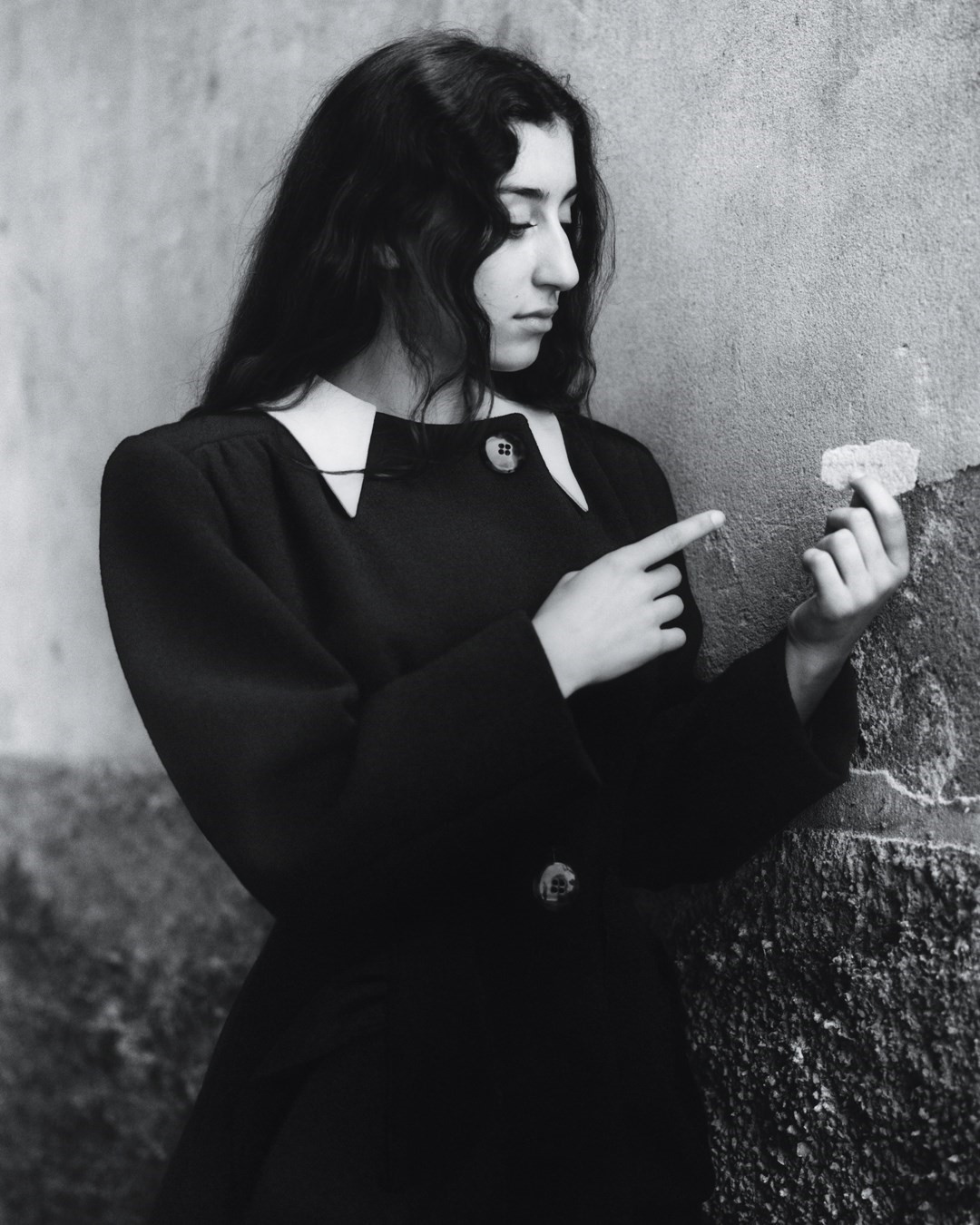

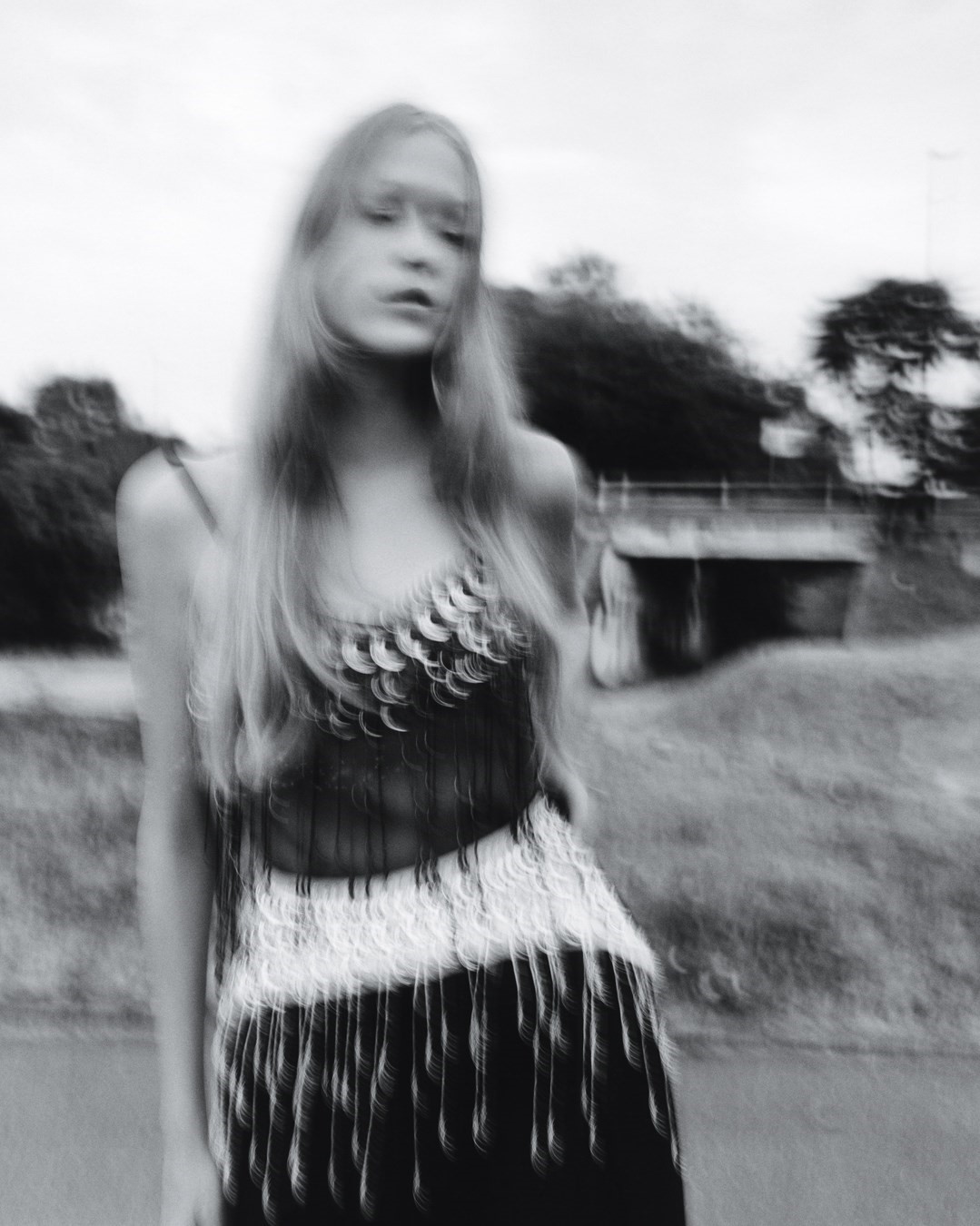
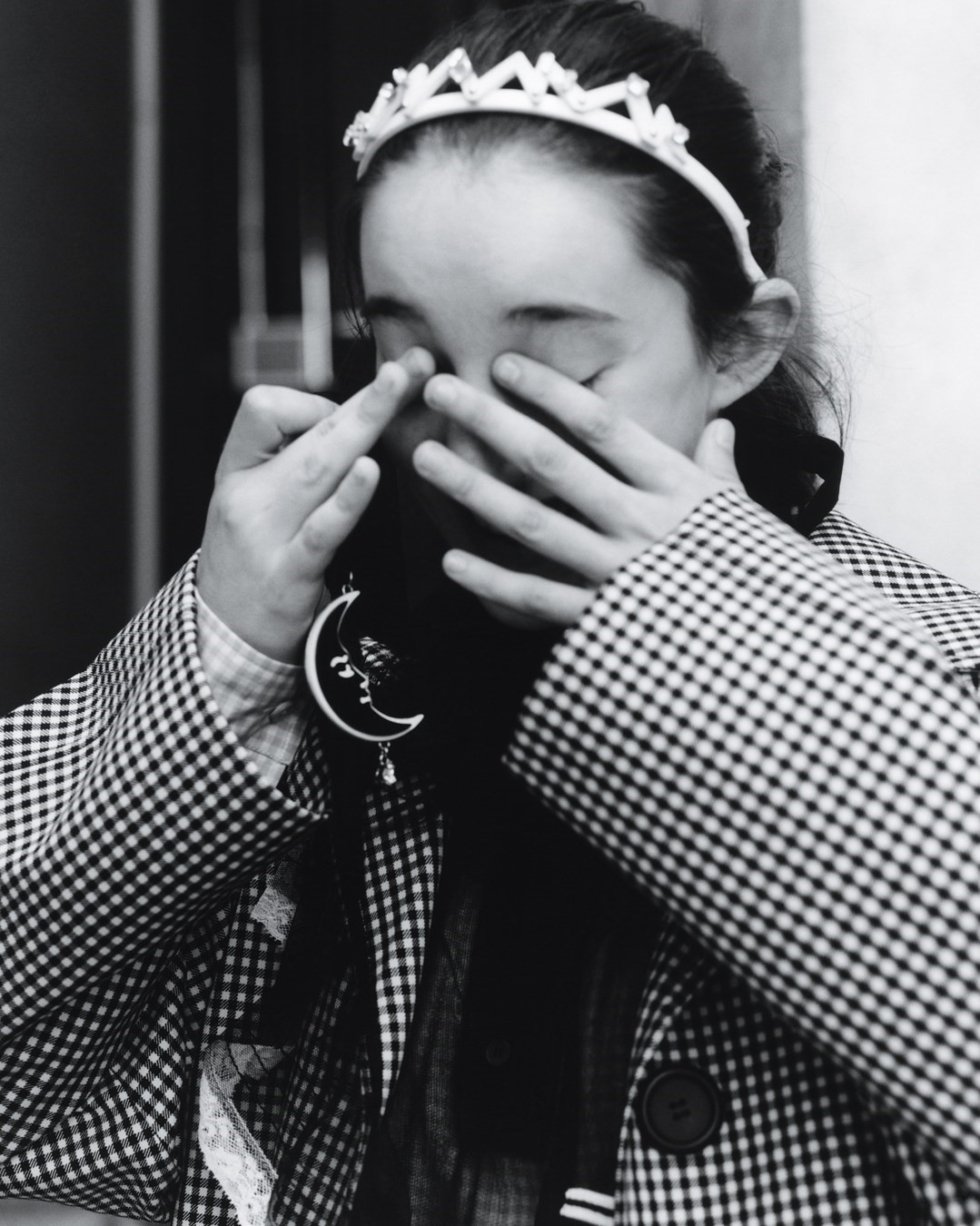
“I think bravery is very important in general. Otherwise, why do you live? You have to try to make things, to do things” – Miuccia Prada
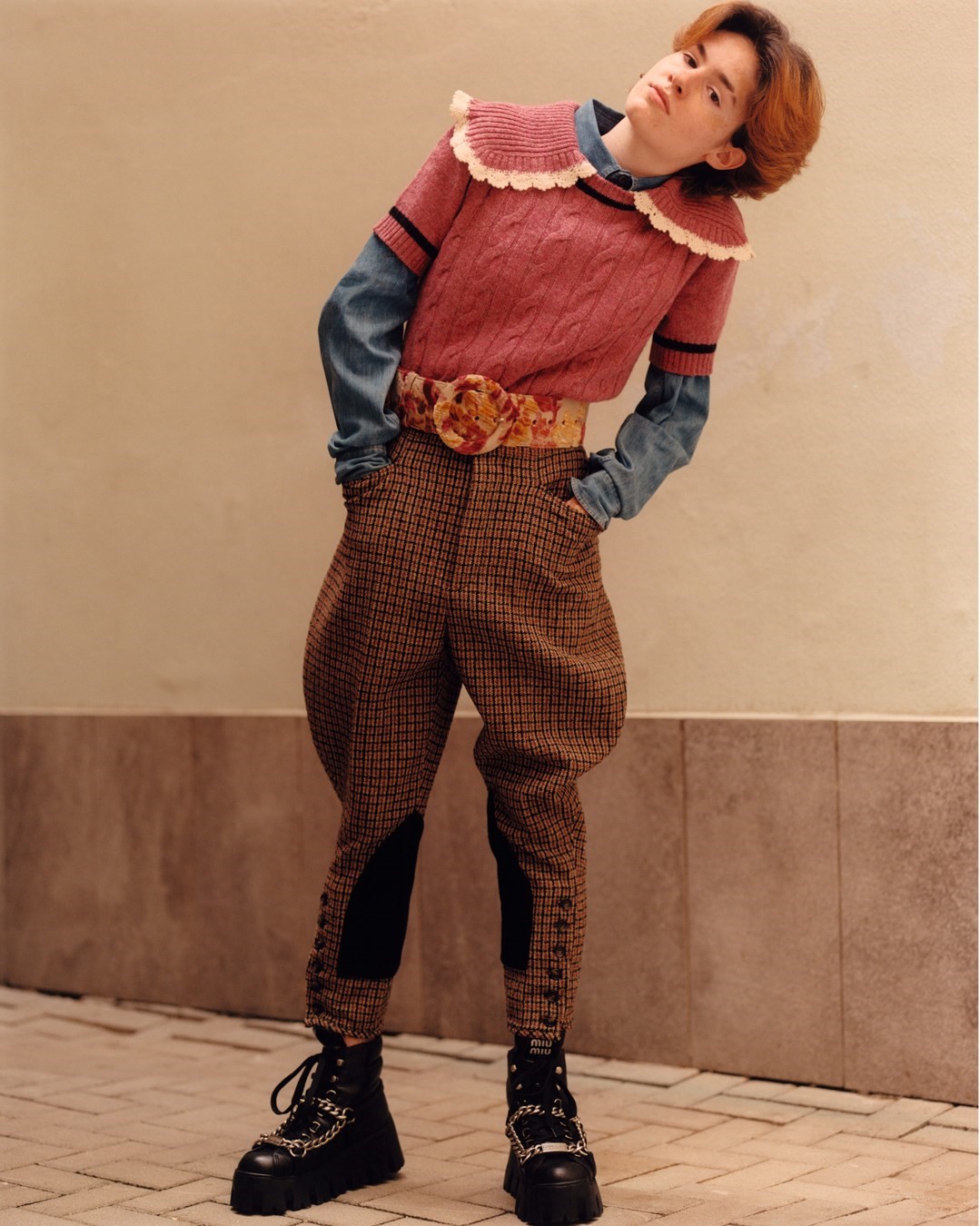
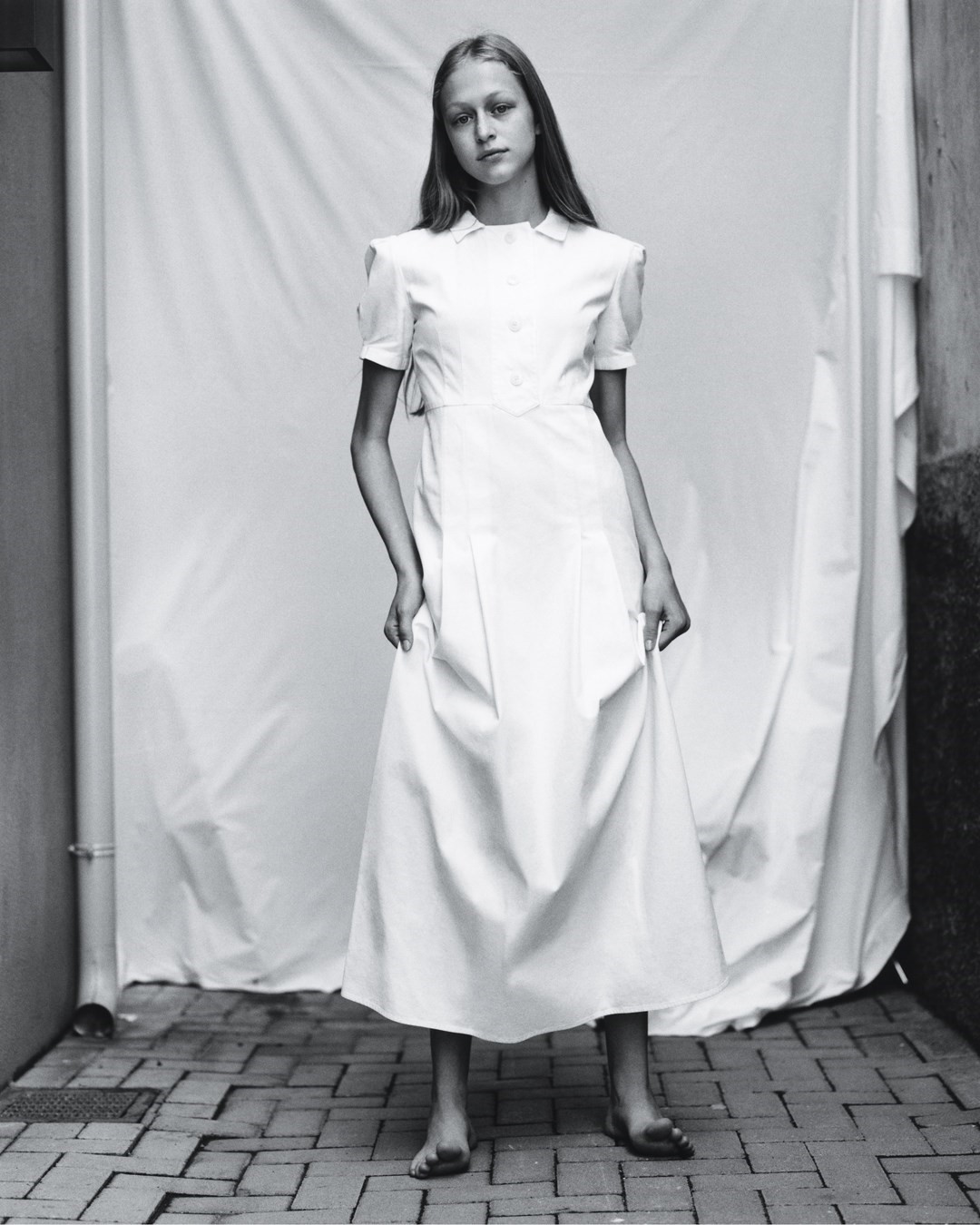
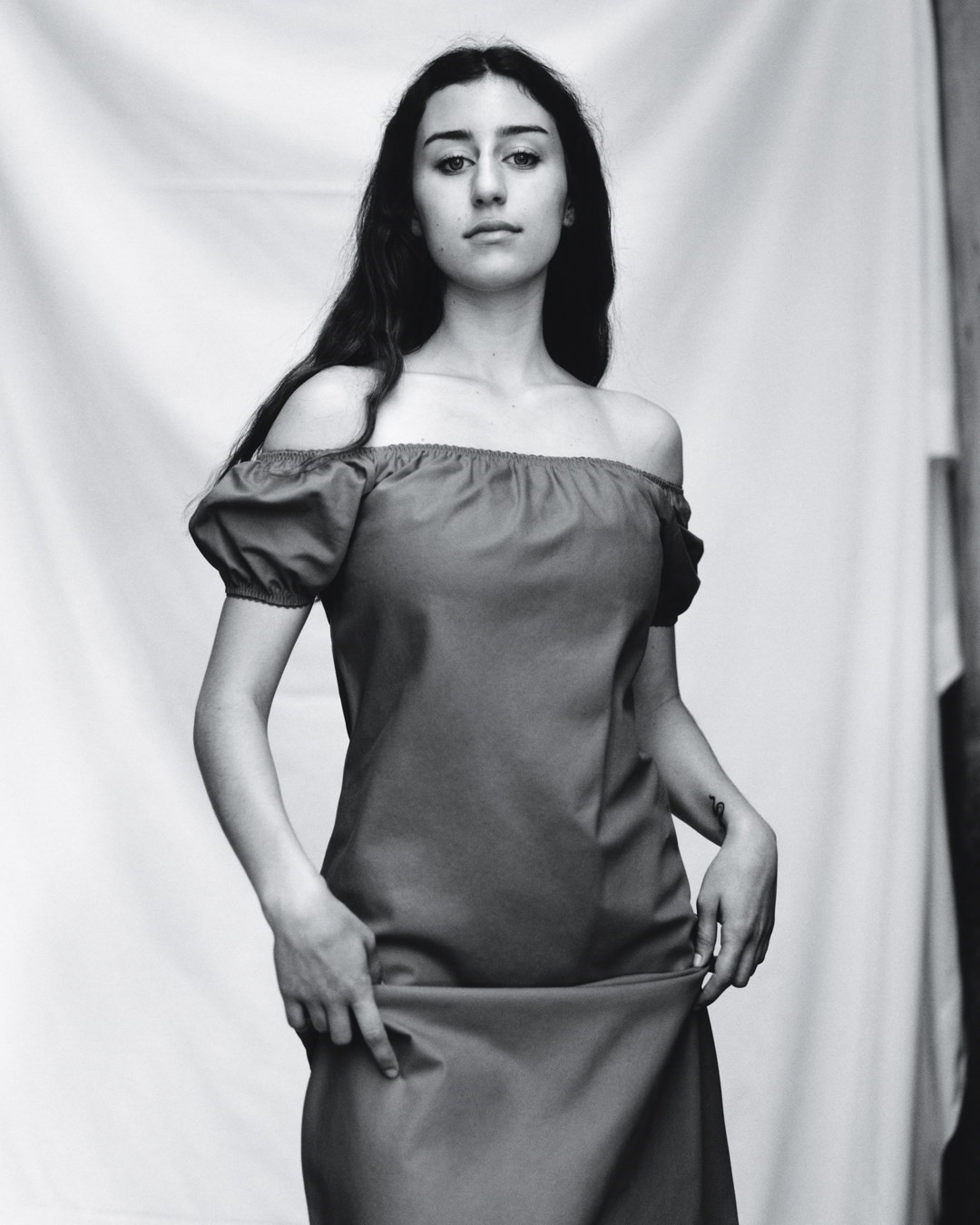
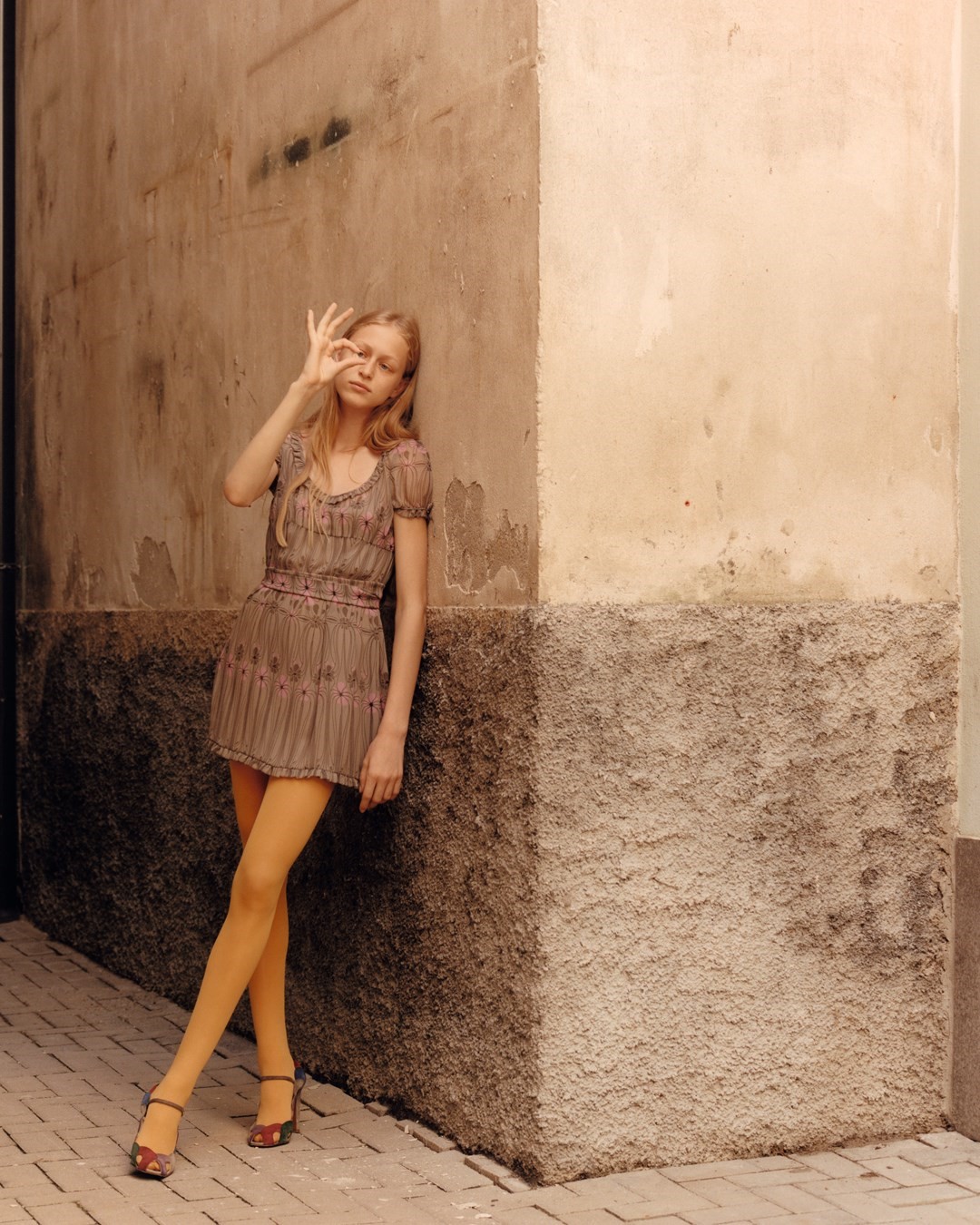
Susannah Frankel: Can we talk first about the Miu Miu show in the mountains?
Miuccia Prada: I’m not sure I would do it again now but at that point you didn’t need many people, which was a good thing, and also there was so much snow. I said it’s now or never. Then everybody got excited. It was a long discussion because of the difficulties of there being no physical show. That is much more complex for me but also more interesting. You have to turn your ideas into a bigger picture. If you call directors, good movie directors, they are not, I think, very good at doing fashion, and fashion people, of course, they don’t know how to make movies. So we had to improvise, to reinvent our jobs. It all came out of this idea of bravery. The mountains, the walking in the snow, the symbol of being brave. Back then I was fixated on women being brave.
SF: You’re always brave.
MP: I try to be. I wanted to be. We decided to go, we dealt with whatever happened. We had very bad weather but also very good weather.
SF: In one way the collection was mountain appropriate – the big trousers, the big boots, the Tyrolean references, the Highland references – but in another way it was about a skirt covered in jewels. That’s very you. The conservative and radical, the appropriate and the inappropriate, often in one look.
MP: That is what I always aim for and it comes instinctively.
SF: It’s about you.
MP: Yes, it’s me.
SF: You were one of the first people to actually combine high fashion and sport in the 90s with Prada Sport.
MP: I remember back then I never wanted to dress myself in sporty things. I didn’t like them. Then I was always into inappropriate things. And I asked myself why when you do sport, or ski, do you have to become another person? I want to keep my love of fashion, my ideas. I don’t want to transform myself into someone else, into a sporty man or a sporty woman, wearing what everyone else is wearing. That was the origin of it.
SF: And today you still combine two apparently contrasting worlds. The idea of the couture gesture – the gloves are big woolly gloves but they’re still long gloves, the hats, the jewellery – with something much more obviously functional.
MP: That’s something that I really like. I like that when you do sport you retain your spirit. So if you run, why shouldn’t you wear a pair of earrings? Be covered in jewels, running along?
SF: You always work with extremes.
MP: I like very different things. There were men’s things in that collection and then there were feminine things. Probably I like the duality in myself. I can be very feminine, or very masculine, or both at the same time. In general, in a modest environment I like to put on the richest pieces. I like opposites together. Why? I don’t know. For instance, in the Fondazione, when we did the house in gold, it was not my idea, it was Rem’s idea, but I thought it was genius because it represents what I like to the maximum. What do you do in gold? The poorest, most industrial, most old-fashioned home. It’s also about assessing the value of something by putting it with its opposite, making inexpensive things look or feel very rich and vice versa. I don’t want to say it’s a political approach because the word carries so much weight but, yes, the point of view is to find the opposite between two extremes, always, and to try to improvise. I don’t question myself about that. It comes so naturally.
SF: Perhaps that’s the recognition that women are not simple or straightforward.
MP: Yes, for sure. It’s not enough to be feminine. Put simply, by mixing things you show the complexity of life, the complexity all around us. To be just one thing is boring.
SF: Do you think bravery is particularly important now?
MP: I think bravery is very important in general. Otherwise, why do you live? You have to try to make things, to do things.
SF: In the past we talked about the idea that, in the 2000s especially, you in particular seemed to be taking bigger risks than smaller, independent labels, bigger risks than the avant-garde.
MP: If you are small – niche – you can be avant-garde. It is very different in a bourgeois context. I struggle sometimes. And my husband tells me, you can’t pretend to be left-wing, because the other ones are all rich, or bourgeois. It is true that with Prada and Miu Miu I want to make the impossible happen. We are a luxury group with concepts that are not only about luxury. In fact, I don’t like the word luxury but I have always appreciated beauty and sophisticated things. So it really is a constant effort.
SF: A constant fight.
MP: Yes, that too.
SF: Miu Miu especially seems to be about female rites of passage – about a girl becoming a woman, a girl on the cusp of womanhood. Of course, that’s not actually about age at all but about spirit, and about the slight fragility – but also the exceptional beauty – of that time in a woman’s life, the time when you’re a girl working out what being a woman means. That is something that continues, that comes up again and again at all ages.
MP: That’s right. That’s great. It’s true that Miu Miu is also about that fragility, the fact that you don’t know who you are, who you want to be. You want to be beautiful, you want to be sexy – but you also want to be nasty, intelligent and political.
SF: However brave you are – however brave Miu Miu is – we are all vulnerable.
MP: I never think about that but, yes, actually Miu Miu is probably a lot about that.
SF: People always say Miu Miu is younger but it’s not about being young physically. It’s about ...
MP: The mentality.
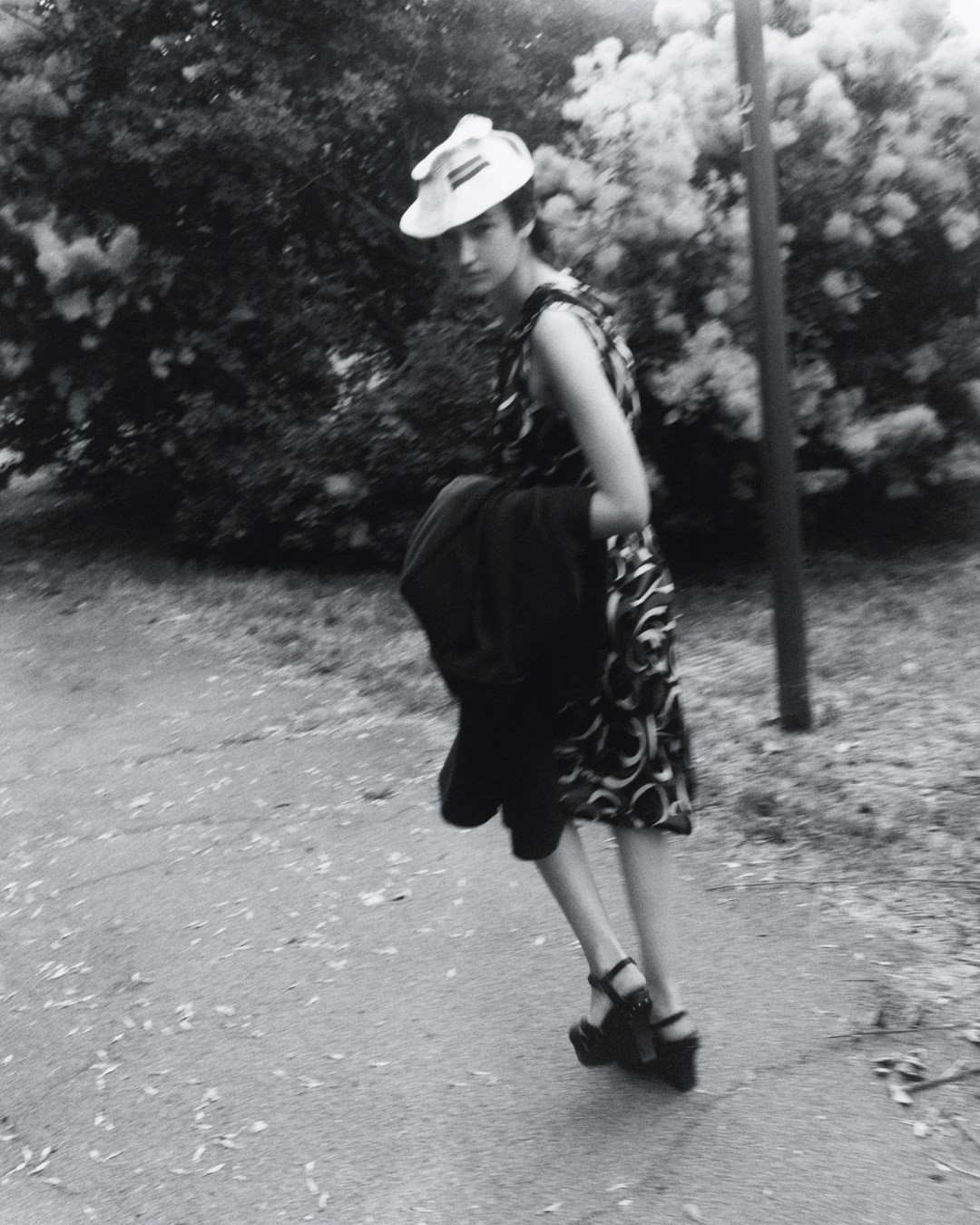
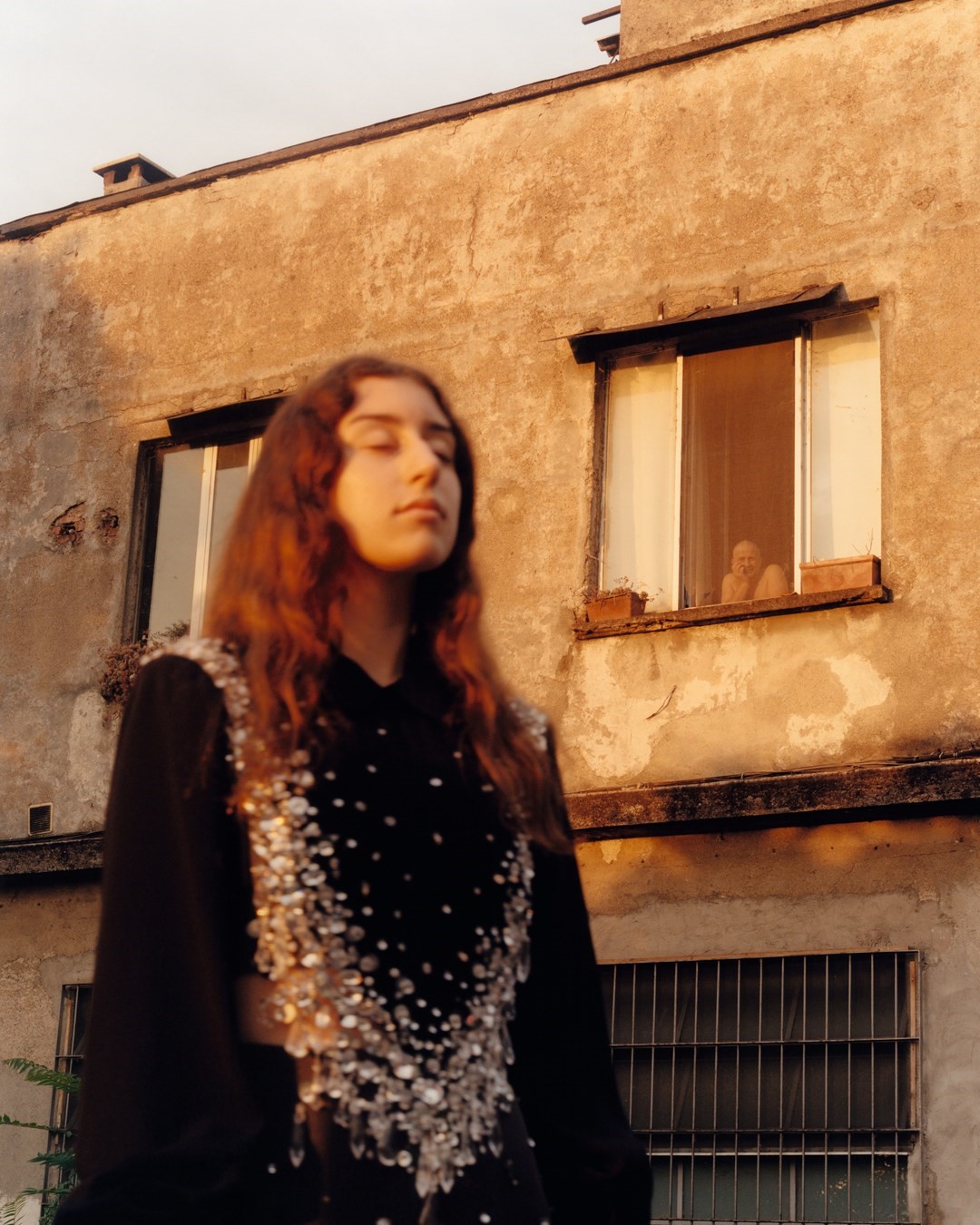
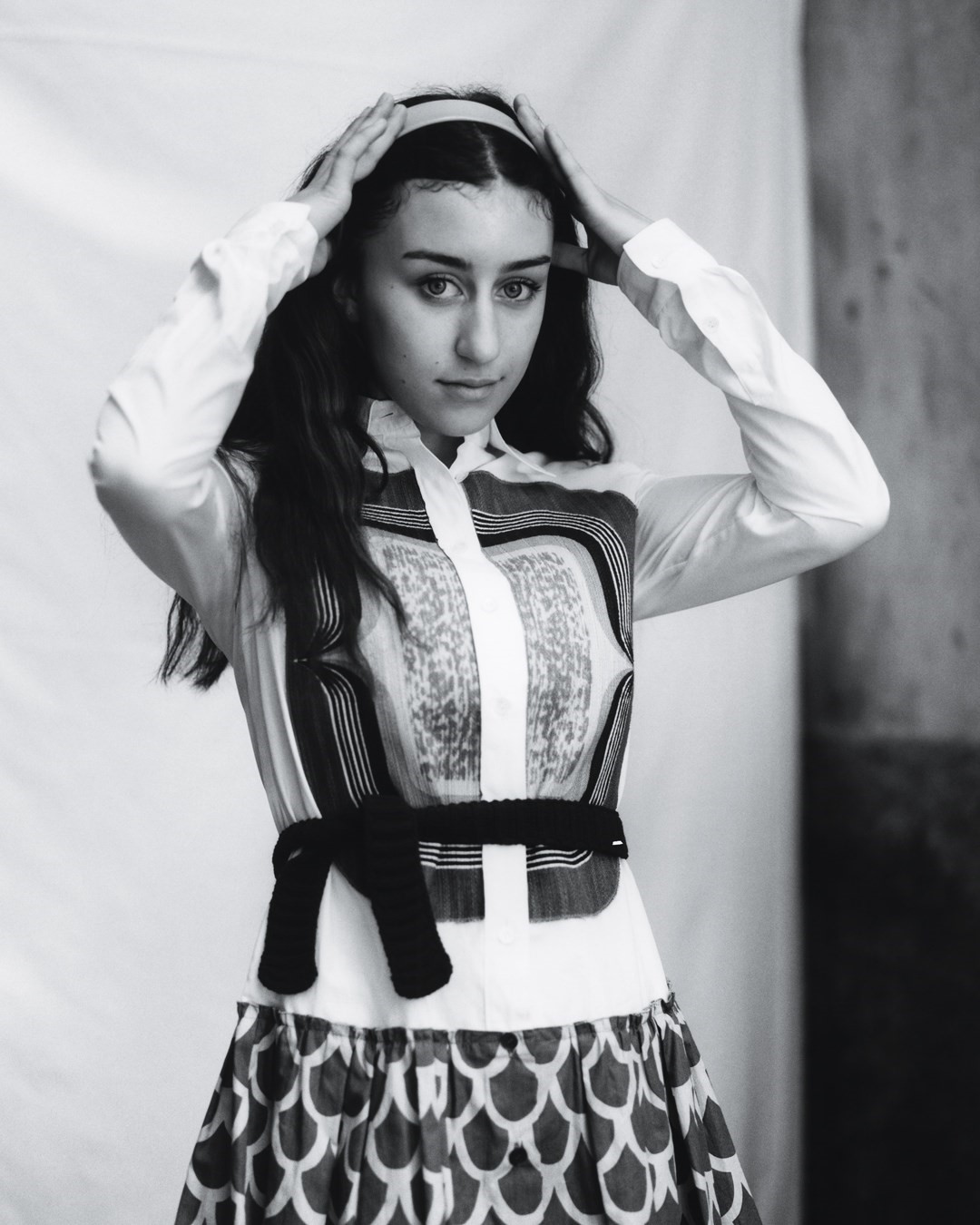
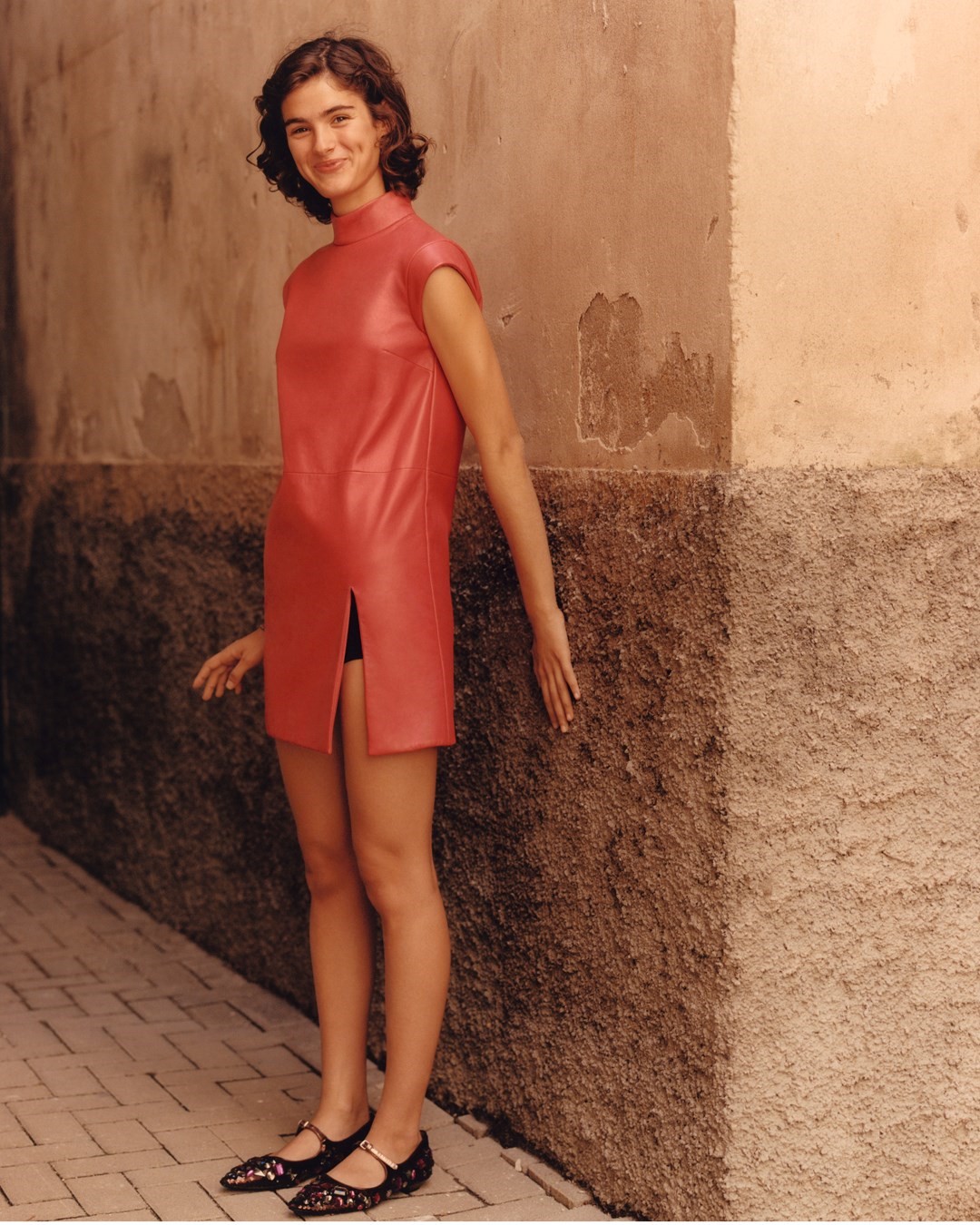
“People are thinking more about the past, about things that count, about the heart, not about superficial things” – Miuccia Prada
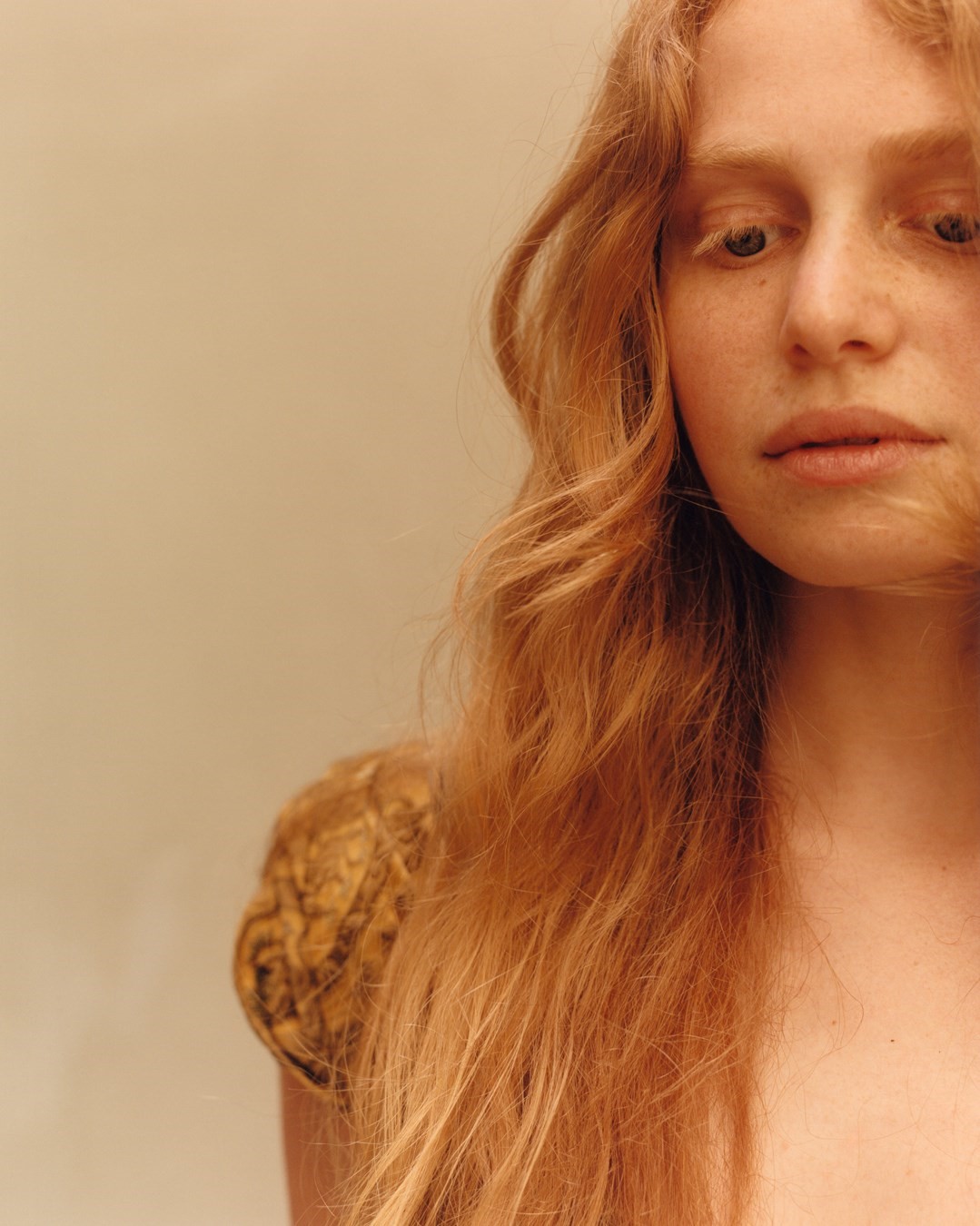
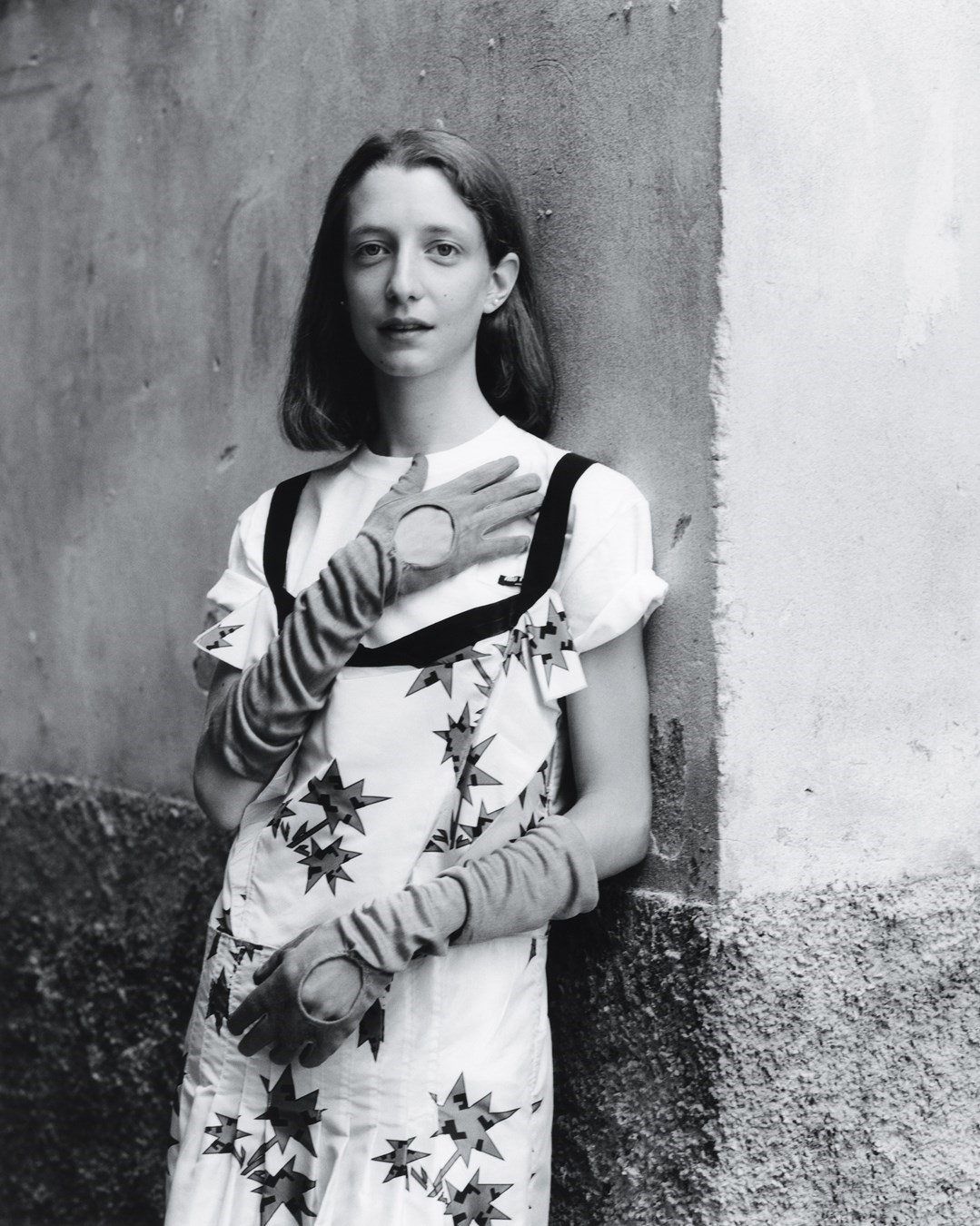
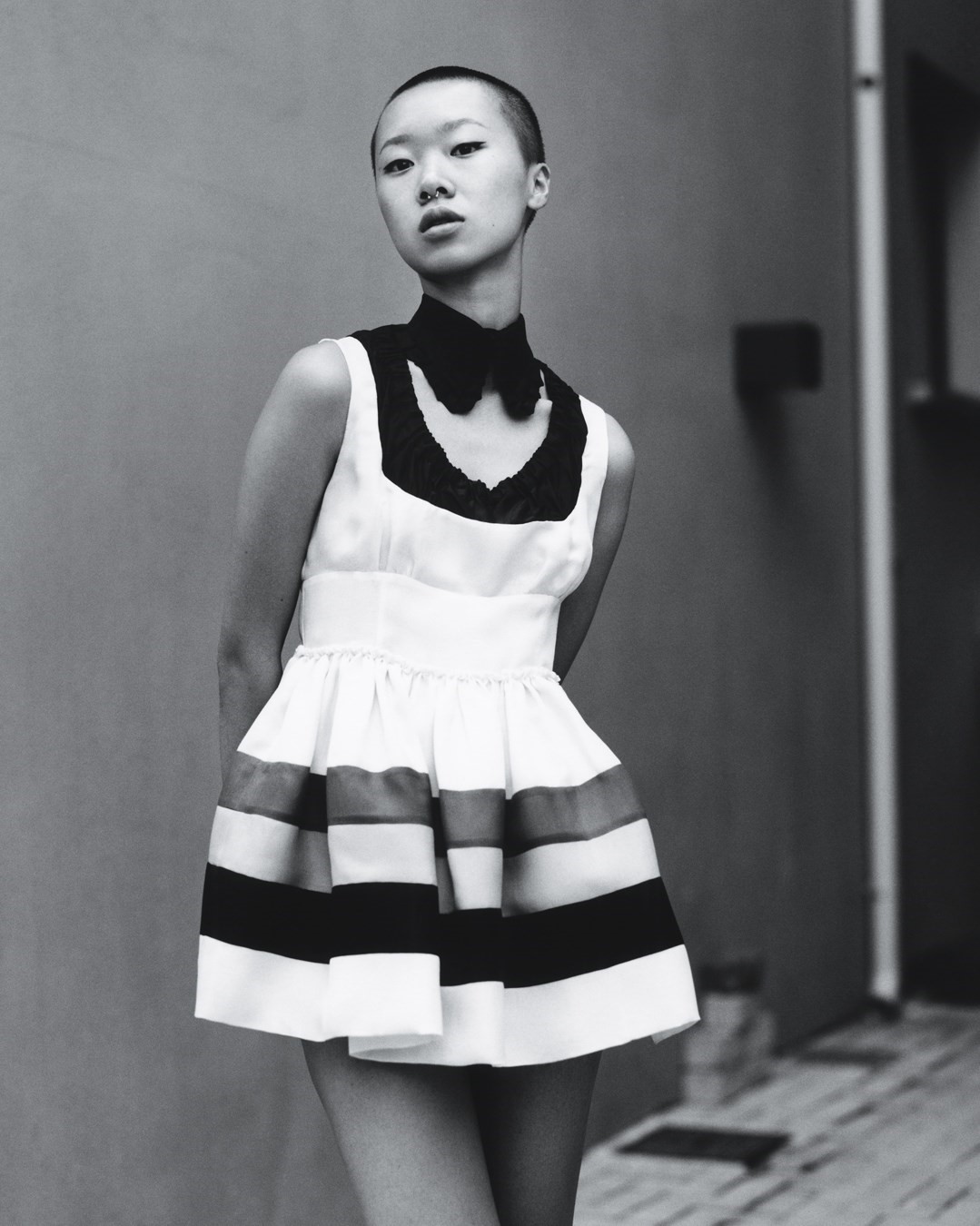
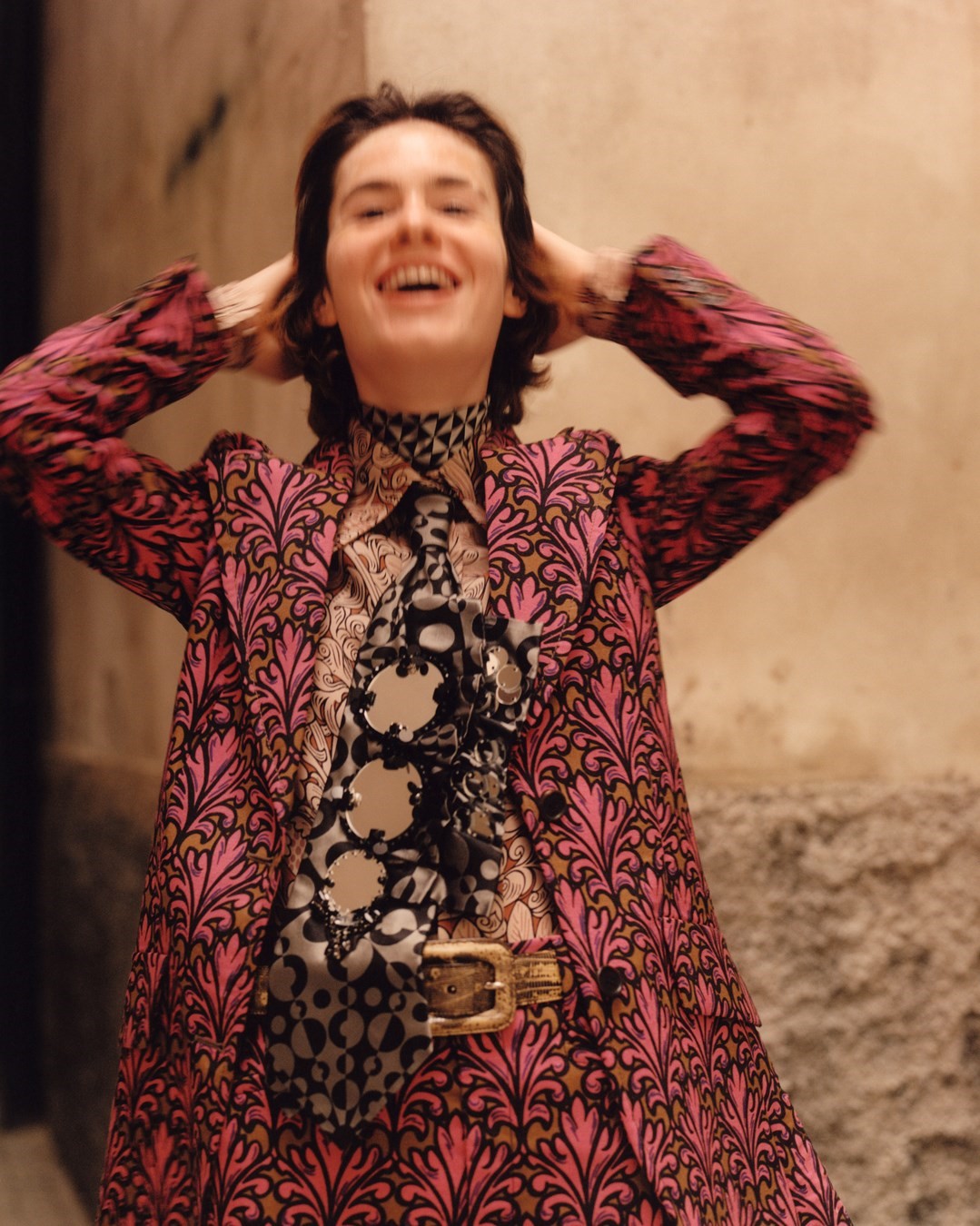
SF: It is also the embodiment of the fact that you can be 40, 50, 60, 70, but you can still flirt.
MP: I strongly believe in that. Apart from I don’t go out in miniskirts, which if you have the courage to and you want to, then why not, but apart from that, when I dress I’m not dressing like an old woman. When you become old, it’s not easy to have fun with how you dress. When you are older, dressing is even more about bravery.
SF: One of the things that has changed since you started designing clothes is that you really can wear what you like.
MP: True. Good taste, bad taste ... It’s very subtle.
SF: This issue of the magazine is about hindsight, the idea of looking at the past to inform the future. That sentiment feels intense at the moment because the present is relatively quiet. Our present is lacking in outside experience, so people are looking back in a romantic way, though not necessarily a purely nostalgic way – it feels like something bigger than that.
MP: That has something to do with looking for meaning. I hear a lot of people saying now that they don’t want to go to stupid parties any more, that what they value is friendship, love. That, of course, is romantic. We are searching for something more complete, more true, not superficial.
SF: You have always said you love superficial things.
MP: Maybe because I would like to be that person but really I’m not. Now people are thinking more about the past, about things that count, about the heart, not about superficial things. The word romantic makes sense.
SF: You have Prada and Miu Miu. Miu Miu is approaching its 30th anniversary, Prada is more than a century old. You shoulder a huge legacy. How do you feel now about that responsibility?
MP: I don’t think about legacy. I know I should but it’s not what motivates me. Also because of our age, people say to me you should enjoy what you have done, celebrate your achievement. Listen, I’m not like that. I’m always thinking about what I can do next. I don’t think of myself as someone who is ambitious but somebody told me recently, “You are a monster of ambition.” In truth, I am very ambitious.
SF: Historically, Miu Miu comes at the end of the ready-to-wear season. It’s reactive to what has come before it at the shows and is done quickly, in weeks rather than months. This situation must throw that slightly. The seasons are difficult to follow now.
MP: That’s why in the end I am still showing in seasons. It took so much time for the fashion world to get itself together, to facilitate the jobs of journalists and buyers and so on. So now I find myself in a place where I can do whatever I want, whenever I want. But I don’t know if that’s right. In the first place, you lose the sense of a season and with that, a little bit, the sense of fashion. I understand that it’s exciting to be free but instinctively I decided to stick with the calendar. Otherwise it’s going to be such a mess.
SF: Fashion is a community – you move from one place to another as a group. The pandemic has left a vacuum.
MP: Yes, but going back to normal shows is maybe like going backwards. Before, you did your job, your clothes, your show, then it was finished. This is the beginning of a whole different chapter and it’s ten times the work. But I’m afraid that now just to go back to physical shows won’t feel so exciting. Maybe you should do both. But both is double the money and more work again. We are discussing this all the time. In the end, somebody said, “People like being together. Who cares about the clothes? They just like having fun, like at a concert, in a football stadium.” It’s more the idea of being with people. Everybody always complains. But now that it is not possible people miss it.
SF: Now you work with Raf at Prada, how has your work with Miu Miu changed?
MP: It has changed. I decided that at Prada I wanted to work with someone else to create a new idea, to have more inspiration and to share, that’s a priority. The priority is for Raf and me to do something together. I’m very happy with that. So Miu Miu is now the place where I am completely myself. When I realise that, then I want to do even more, to really concentrate, to inject more passion, more of what I like. The show in the mountains was exactly that. It was very personal. Because of the location and the implications. For sure, Miu Miu is the only place where I am alone.
SF: Is there more of a sense of your renegade spirit in Miu Miu?
MP: Absolutely. It’s what I like in life. I have not always been able to be enough like that perhaps. I was when I was young, with my political ideas and activities, I kind of did it. Probably not enough. But that’s what I like.
SF: I think your son said to you that, as someone in a position of power, you’re obliged to speak out and say things that go beyond fashion. Do you believe that?
MP: That’s a big question. I always hated it in the past. I never wanted to answer any questions that weren’t specifically related to what I do, related to art or fashion. I didn’t want to talk about politics or any of the things that I care about most. That is partly out of a sense of decency, about being a rich fashion designer. Having said that, because of the influence we have, we probably should speak out more. I should probably speak out more. But that goes against my spirit and my thinking completely. I’m thinking about it, about how to try to speak to people more.
SF: People often talk about a certain woman they design for. Is there a Miu Miu woman?
MP: You know that’s something I don’t like. I design what I think is right. It’s theoretical. I never had a woman in mind, I don’t have an icon in mind. I do like a renegade. Usually, every brand has its target. I don’t. But I always said I do what I feel is right and if I am in contact with reality, if I know people through reading, through movies, through meeting them, then it will work. The more I am in contact with reality the more what I do makes sense. If it works it means I was connected and my thoughts were realistic. I’m trying to do something that is relevant, to translate that into clothes, because that is my job and something that I am able to do. You know that I am fanatical about the life of people, that is the reason I love vintage. I love thinking about who the woman was who wore something, about what their life was like. People’s lives. I like thinking about that a lot.
SF: You recently put exactly that idea into practice with Upcycled by Miu Miu, that idea of finding vintage clothes and letting them tell their own story all while putting your mark on it.
MP: When I did my first show for Prada, I was very much criticised for appropriation. It was the 80s, the art world did it the whole time, but in fashion it caused a scandal – a dress that was totally 60s, totally 70s. But I loved it because I like history, I like stories of periods, stories of women. I think, OK, modernity, the future, but all our ideas come from what we saw, what we heard, what we read. We are our past. How can we pretend it doesn’t exist? Now, with Upcycled, it’s conscious and we want to build on it, but in the first instance it came from a place of naivety, from a love of vintage and the fact that vintage pieces entertain the people who wear them. It is a piece of clothing but it expresses a whole life – how was it worn, what was it worn for, what did its original owner do while they were wearing it?
SF: In fact, that’s what we love about clothes generally.
MP: Yes, because clothes are instruments for living, basically. To conquer or not to conquer, to do whatever you want. I always think dresses have to be useful.
SF: As a young woman you were active in the second wave of feminism. Do you think things are better now for women than they were then?
MP: There’s a long way to go. That is one of my biggest questions – how long does it take? Sometimes it seems like we’re going backwards rather than forwards. Sometimes when you see movies about the suffragettes, you see how they really struggled. For sure in our countries, for people who are richer, more educated, things are better, but that’s easy for us to say. There are still things happening to women all over the world that are terrible – unbelievable.
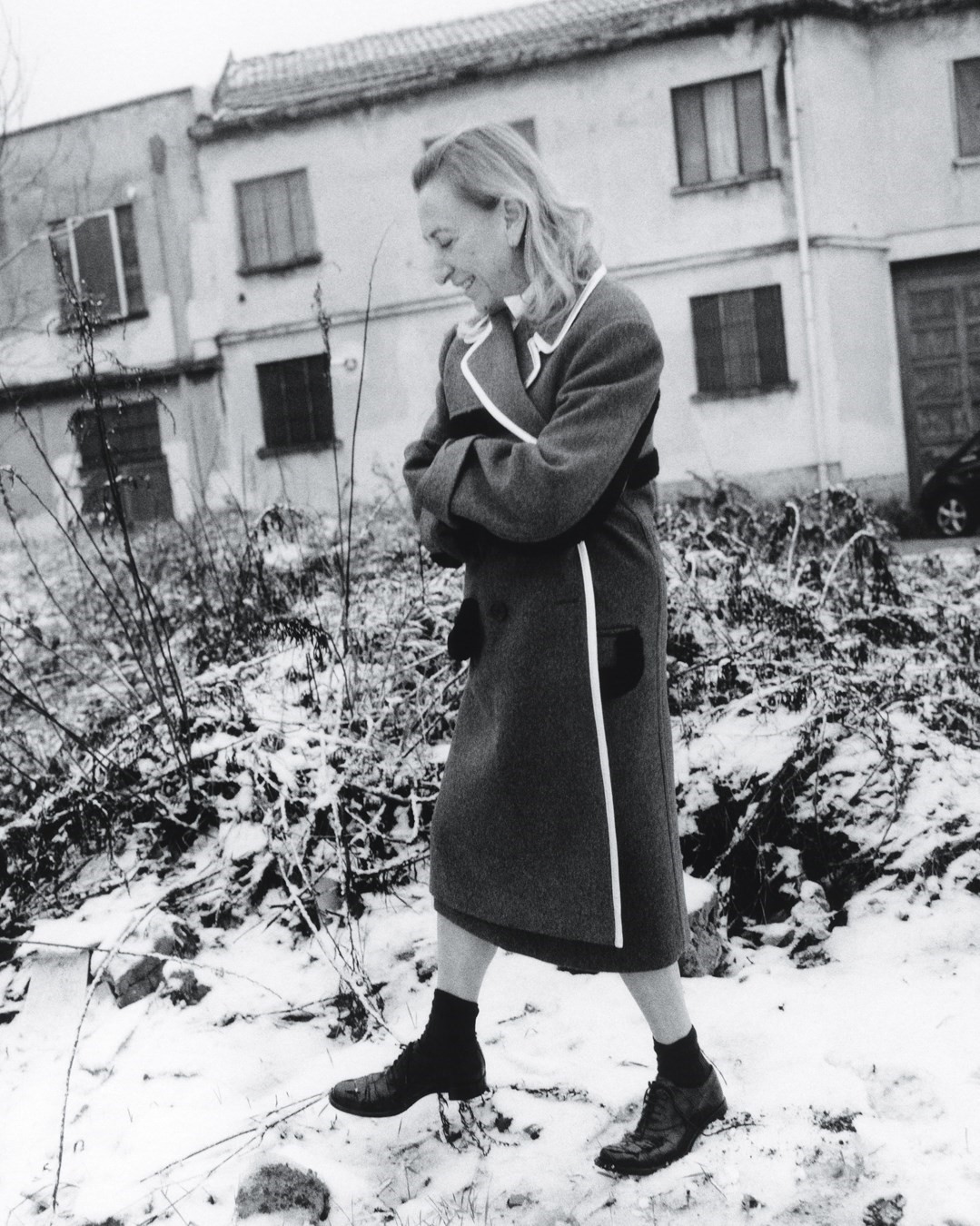
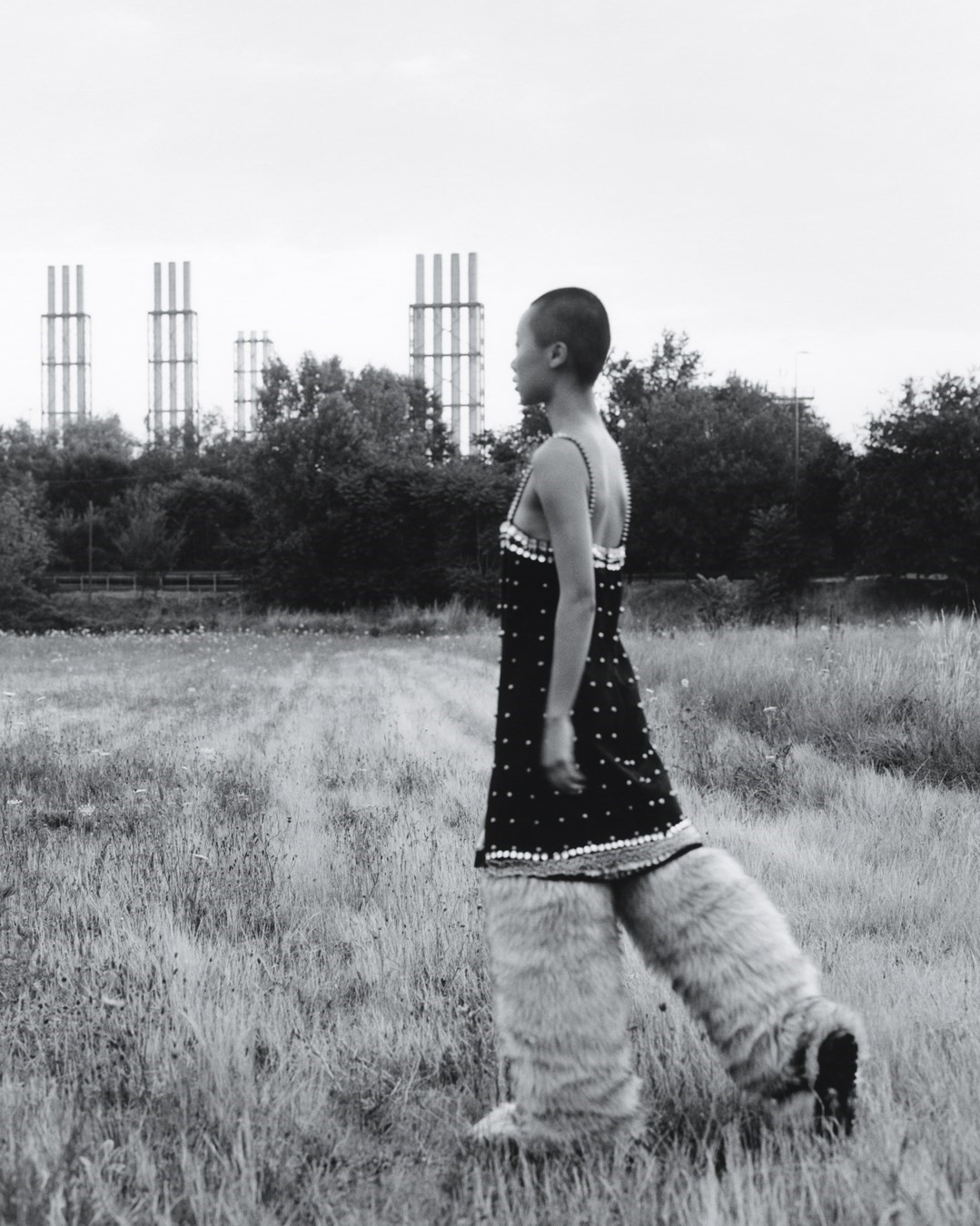

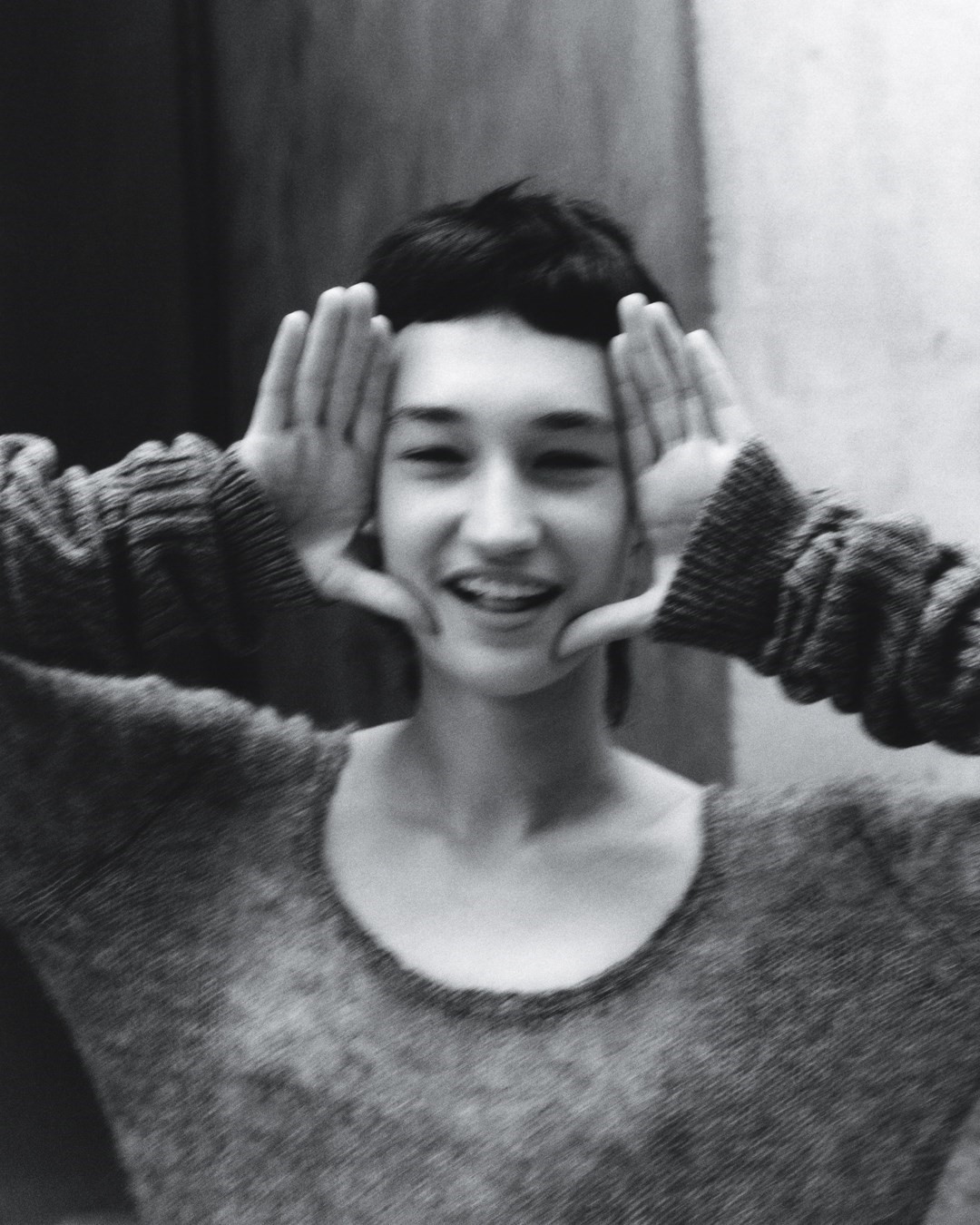
“Miu Miu is the only place where I am alone” – Miuccia Prada


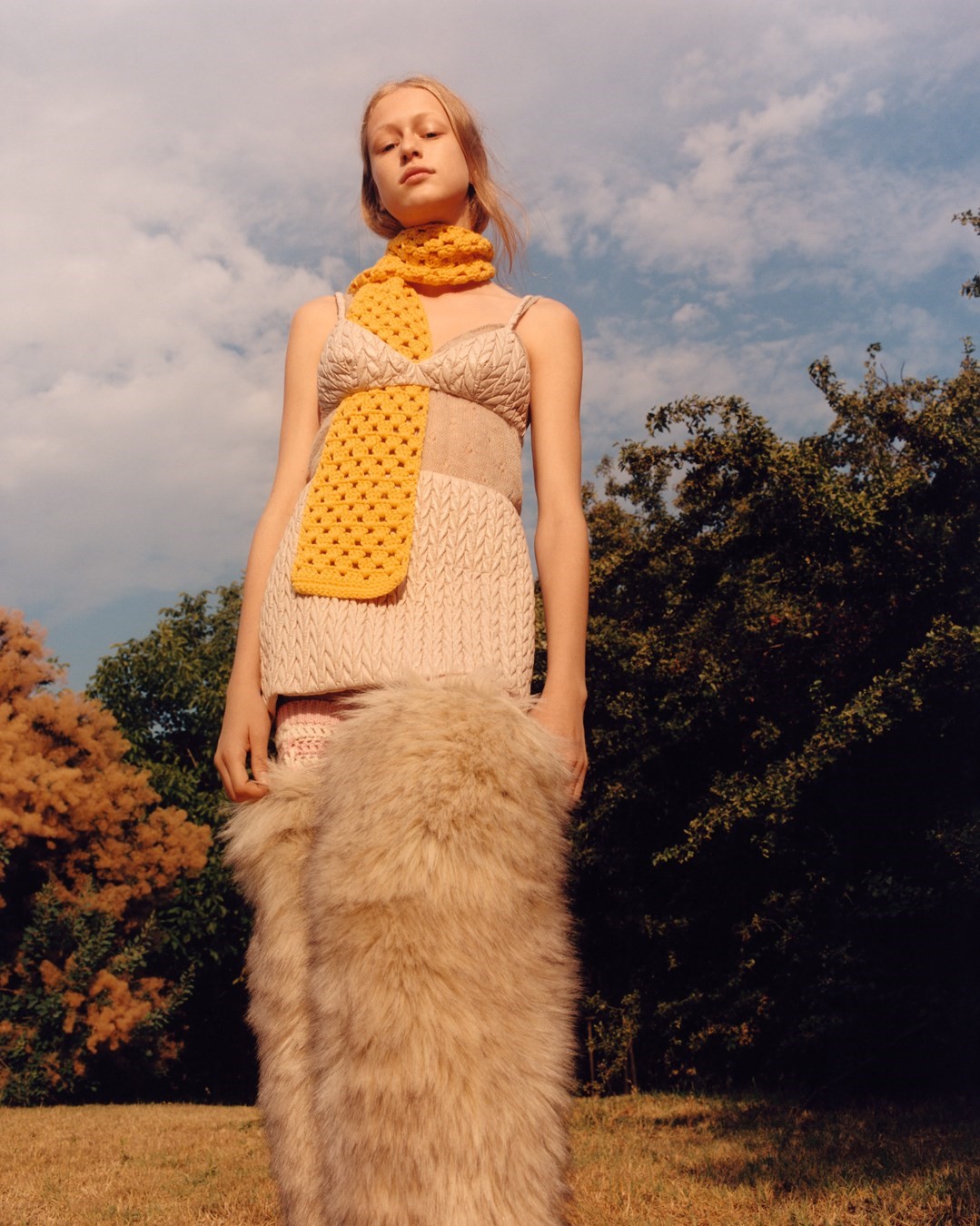
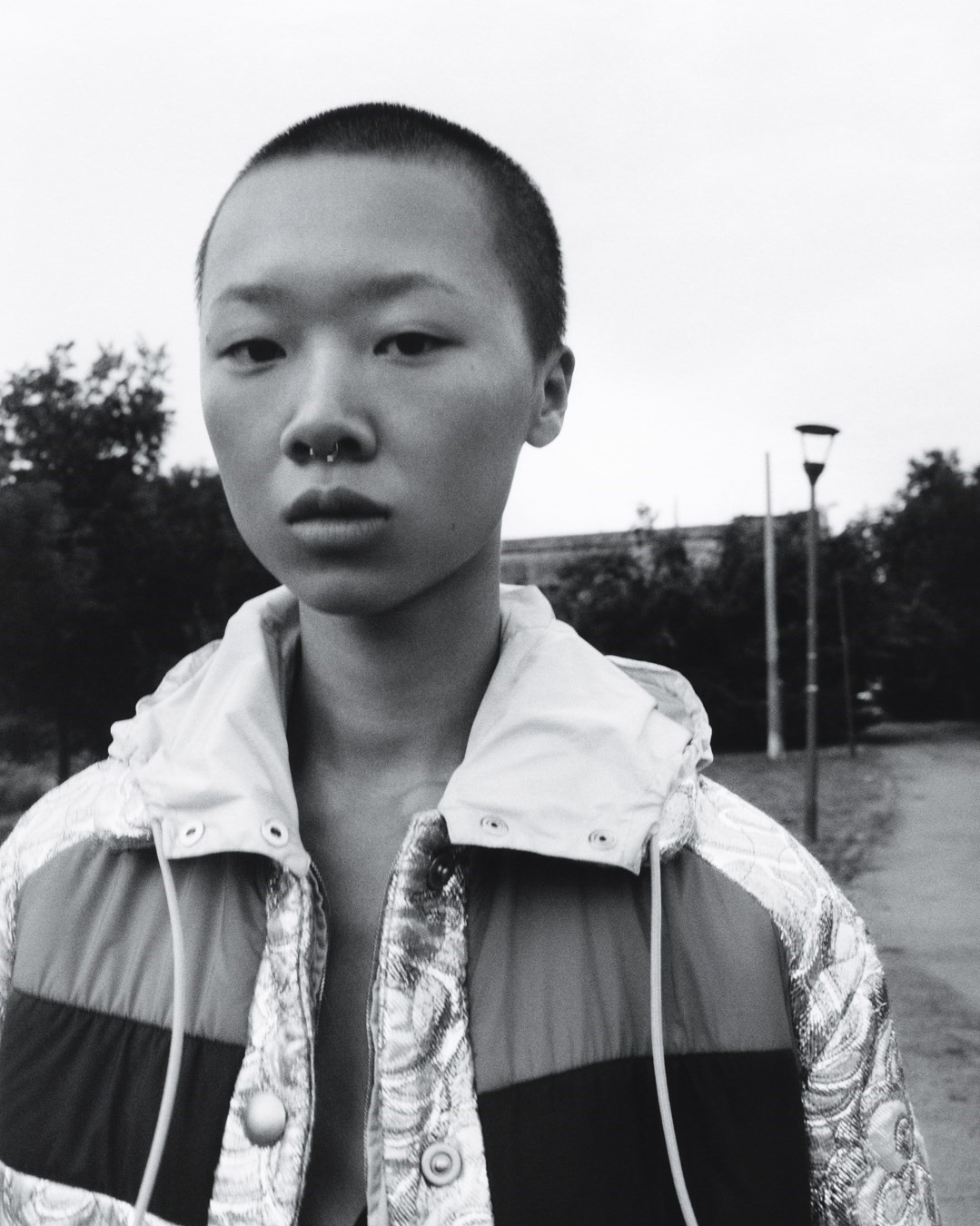
SF: The upheaval of the past 18 months has meant we have all been forced to acknowledge a shift in our perspectives and change the way we look at things and how we prioritise.
MP: I think so. Six months after the pandemic started, my son told me that if it finished now things would go back to how they were before but that if it lasted longer things would change. I am very much changed. I’m changed in general but mainly in thinking that anything I used to do in a certain way I should now do differently. I have an instinctive desire for change, for not repeating things we did before.
SF: And when you’re designing, thinking about bravery and about fighting, you’re also dreaming.
MP: I always say that I don’t like dreaming. If I dream about something I want to make it happen.
SF: For someone who sometimes thinks they are not ambitious that’s quite an ambitious idea.
MP: Now my ambition at the Fondazione is doing science. We are preparing a show for the next biennale with the most important scientists in the world. It’s about the human brain. I always want to do shows that are about religion, feminism, science, big subjects that are floating in our heads but that many of us don’t really understand. And they said they wanted to do it only if the Fondazione Prada in Venice becomes a permanent place for exploring ideas about neuroscience. So, yes, that’s also ambitious.
SF: The idea of the same woman who grew up skiing in a skirt now doing that is inspiring – uplifting. Can we talk about Miu Miu as a community of women who shop but who also exchange and share ideas about culture, about things they are excited by and that they love? You have Women’s Tales, dedicated to supporting female talent in film, Miu Miu Musings, conversations between women about issues that are culturally and socially pertinent, Miu Miu Club ...
MP: We do and that’s very important to me. I love film and know that, even now, it is not so easy for women to break through, so if we can help we should. I also believe in giving women a voice, in projecting a feminine point of view. I have this idea that, during the day, our shops are shops, about shopping for fashion. Then, during the night they are about a community.
SF: Have you missed your teams during this period? Have you felt restricted?
MP: For the past 18 months, I have worked on Zoom. I don’t know if I miss my teams physically because I am discussing with them all the time. Sometimes when I am at work, there are so many distractions, so many empty moments, so many boring moments. Now at home maybe I’ve found the excuse to do other things. And that is fantastic. I want to be careful not to lose that privilege. Also, I can do so many more appointments. Before, you had to go to the office, to a bar. A ten-minute discussion might take two hours. This is easier, simpler. Also, I am lazy. I like staying home very much.
SF: So there is an element of relief?
MP: I am happy here. This pandemic has changed my way of thinking on so many levels. I’ve had more time to consider things. We were so afraid, there were so many difficulties – all the shops were closed and everything was a disaster. We were forced to react, to find new ways of doing things, new ways of taking care of clients. When we were closed there was a real sense of solidarity between human beings. Perhaps we had arrived at a point that was repetitive, generally decadent. When the world changes it signifies the rebirth of something, there is a new energy.
SF: Do you have a sense of it being wonderful to spend your life making beautiful things?
MP: For sure. And now I have much more time to do my job and to do it well. Before I was distracted. Even though I have barely any social life there were still too many distractions. And the idea that I could maybe stay in one place, for just one day, and think about clothes – that was such a joy.
SF: You have been one of very few designers who have actually changed our aesthetic, changed the way people – women and men also – dress. At the beginning, you had to fight to be understood, people described your work as ugly, and certainly it played with received notions of taste. Now though, with Prada and Miu Miu, there is an understanding, and a love of the things you have done and still do. Do you feel proud of that?
MP: Of that, yes, I am proud. I think that if I have achieved anything it is that. But it wasn’t revolutionary. It was subtle. Early on the avant-garde thought I was not avant-garde enough, the classicists thought I was very disturbing. And I loved that. It is the in between that interests me. In that sense, little by little, probably because I didn’t come from the fashion world, I changed things. It was only in fashion that there was this obsession with beautification in a conventional sense. In art, in the movies, in books, those ideals were questioned. And I too thought that was so old-fashioned, so conservative. Now it’s normal to question those values. I think I have contributed to that.
Hair: Paolo Soffiatti at Blend Management. Make-up: Luciano Chiarello at Julian Watson Agency. Models: Corinne at Street People Casting, Elena Burgin and Yu Shan Chen at Persona, Mira Nora Nagy at Why Not, Valeria Pavesi at Fabbrica and Anita Salinsky at Rebel Management. Streetcast models: Myrsky Kerko, Lucy Marega, Garfield Pagani and Ludovica Richiello. Casting director: Julia Lange at Artistry. Casting associate: Olivia Langner. Additional casting of Anita Salinsky by Florinda Martucciello, Sara Casana and Mara Veneziano. Photographic assistant: Cecilia Byrne. Styling assistants: George Pistachio and Fabiana Guigli. Production: Nicola Catterall and Sophie Hambling at Farago Projects. Local production: Alessandra Gabbetta, Eleonora Giammello and Alberto Angeloni at Hotel Production. Black and white printing: Peter at The Image. Retouching: Simon Thistle
This article appears in the Autumn/Winter 2021 issue of AnOther Magazine which will be on sale internationally from 7 October 2021. Pre-order a copy here.
